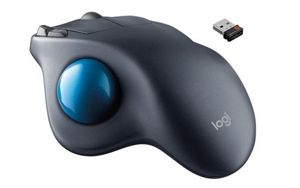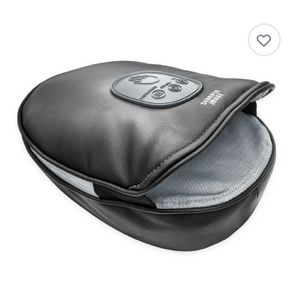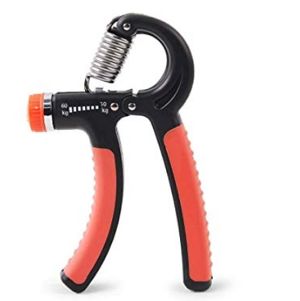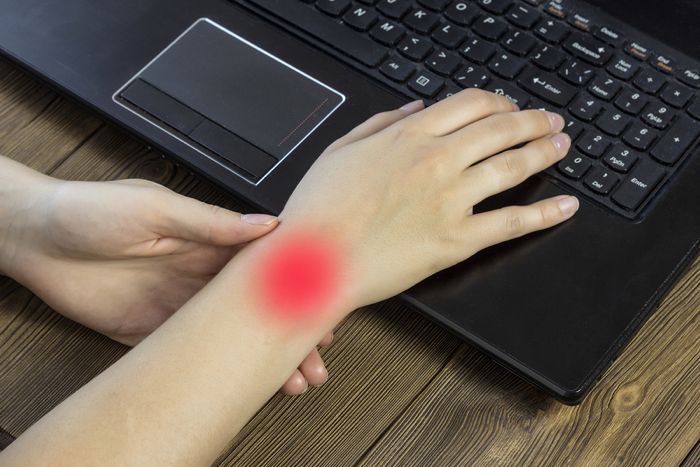Are you suffering from hand pain as a writer?
Back when I first started working as a copywriter for a corporation, I experienced some hand and wrist pain.
A little research compelled me to ask for a split keyboard, and once I got it, the pain disappeared. Since then, I’ve been super lucky, and haven’t had any more trouble with my hands.
Others, however, aren’t so fortunate. My brother regularly has to deal with arthritis-type pain in his wrists and fingers, even though he hasn’t been officially diagnosed with arthritis.
A writing friend of mine also struggles with hand and finger pain that makes his novel-writing difficult.
Repetitive injuries go with the territory, but that doesn’t mean we’re doomed. Below I’ve listed seven different solutions that can help writers either avoid or lessen hand pain, as well as seven stretches that can do the same.
Even if you’re feeling fine right now, I’d highly suggest you look into these options as a way to apply some preventative care for yourself. We all plan to spend years writing, so we’ve got to take care of our hands.
7 Options to Help Writers Avoid and Relieve Hand Pain
Keep in mind that we’re talking only about hand and finger pain here, though some of these solutions may also help you avoid wrist pain, as well.
 1. Split Keyboard
1. Split Keyboard
I really don’t know why anyone would write without one of these, particularly if they write (or even type) for more than a couple hours a day.
A regular keyboard forces your hands into an unnatural position, which can lead to strain and pain.
To see what I mean, stand in front of a desk or table with your hands at your sides, then simply raise your arms up and then let them fall (gently) on the table in front of you.
If you keep your hands relaxed while you do this, you’ll notice they land pointed toward each other. This is their natural position, and the position that a split keyboard accommodates.
These keyboards are not overly expensive. You can get one from $30-$75 that will do the trick. When you consider how much you’re typing, that’s definitely a worthwhile investment.
 Avoid Hand Pain Tip 2. Vertical or Trackball Mouse
Avoid Hand Pain Tip 2. Vertical or Trackball Mouse
A regular mouse is often too small for your hand, and requires you to curl up your fingers to operate it.
A vertical mouse (left) keeps your hand and wrist in a natural position, so you’re not straining your palm or fingers.
 A trackball mouse like the lower one pictured here offers similar benefits, and allows you to move the cursor quickly just by rolling the ball with your thumb. (This is the one I use and I love it.)
A trackball mouse like the lower one pictured here offers similar benefits, and allows you to move the cursor quickly just by rolling the ball with your thumb. (This is the one I use and I love it.)
The important thing is that the mouse is large enough to fit the space in your palm so you’re not having to work your muscles to grip and manipulate it.
You should be able to relax your hand completely and simply move a finger or thumb now and then.
3. Typing Gloves
I haven’t tried these, but I’ve heard good things about them. They’re made for those with arthritis, but if you’re experiencing muscle or tendon strain in your hands or fingers, they’re also likely to help.
 The difference between these gloves and other fingerless gloves is that they provide some compression, so they help increase blood flow to the muscles and tendons while decreasing swelling and providing some extra support to the joints in the fingers.
The difference between these gloves and other fingerless gloves is that they provide some compression, so they help increase blood flow to the muscles and tendons while decreasing swelling and providing some extra support to the joints in the fingers.
They also keep your hands warm, which again, encourages healthy circulation.
Check out the testimonials and reviews on these—many people credit them with relieving pain.
If you’re struggling, they may be worth a try. Find a variety available at Amazon.
Avoid Hand Pain Tip 4. Voice-to-Text Feature
One of the reasons writers experience hand and finger pain—particularly thumb pain—is because in addition to doing a lot of typing, we’re also texting and typing on our smartphones. This can cause strain in those small tendons in the fingers and thumb, leading to aching, cramping, and throbbing.
In addition to taking regular breaks, consider using your voice-to-text feature more often to alleviate the pressure on your thumb and fingers. Typing with a stylus more often may also help.
 5. Hand Massager
5. Hand Massager
When I saw this I really wanted to try it! After a long day of typing this has to be the height of luxury, right? But for those who are at risk for pain or who are already in pain, it could be a helpful daily preventative or treatment.
Massage of any kind helps increase circulation, relax muscles, and ease inflammation. Spending even a few minutes with a massager after an intense writing period could help reduce the risk of injury and joint inflammation.
Sharper Image makes a vibrating hand massager that’s available at Bed, Bath & Beyond for only about $60. It uses a combination of air pressure and vibration to ease muscle tension, and it’s portable so you can take it with you. The Breo iPalm offers a more expensive option that uses air pressure and heat to relax hands and relieve tense muscles.
There are also vibrating arthritis gloves, infrared light hand-relief mittens, and massaging hand saunas available. All of these are advertised as helping to provide pain relief and relaxation. Of course, if you have a loved one around willing to give a hand massage, that might work just as well or better!
Google “hand massager” to find other options.
 Avoid Hand Pain Tip 6. Grip Strengtheners
Avoid Hand Pain Tip 6. Grip Strengtheners
One of the best ways to prevent pain is to keep your hands and fingers strong. My grandmother spent most of her life milking dairy cows, many of them by hand.
She retained her strong grip far into her 90s—so much so that we grandchildren would often challenge her to arm wrestling contests, most of which she would win!
As long as you’re not already hurting, it’s a good idea to regularly exercise your hands with some sort of grip strengthener. There are many options out there, and any of them will help keep your muscles strong. Here are a few to try:
- NIYIKOW Grip Strength Trainer
- Ultimate Hand Helper
- Zen Strength Adjustable Hand and Finger Exerciser
You can also go for the traditional exerciser ball. The Theraband is one option.
7. Supplements
If you’re already experiencing some form of hand or finger pain related to arthritis or something similar, there are supplements that can help relieve inflammation and reduce pain.
The following have all been researched and found to show promise in relieving inflammation and joint pain. Most health food stores now carry combination herbal formulas designed to help relieve this type of pain.
Of course, always check with your doctor before taking new supplements.
- Devil’s claw
- White willow bark
- Turmeric
- Boswellia
- Ginger
- SAM-e (S-adenosylmethionine)
- Fish oil
- Gamma Linolenic Acid (GLA)
If all else fails and you find that your hand pain is limiting your ability to work, consider using voice-recognition software on your computer. Author Anne Goodwin started using Dragon software to write her novels after hand and shoulder pain made typing too difficult. She has some tips for readers about which software to get, when to get it, and how to use it on her Writing and Wellness feature.
7 Stretches to Help Writers Avoid and Relieve Hand Pain
In addition to using tools that help make your life easier and more comfortable, it’s important to regularly stretch the muscles and tendons you use every day. Whenever you use a muscle, you tend to tighten it, and you need to stretch it out again to keep it comfortable and working optimally.
The following seven stretches help keep the hands and fingers limber and can also help relieve any pain you may be experiencing.
Hand Pain Stretch 1. Prayer Stretch
Place your hands together in a prayer position, then with fingers pointed upward, bring your hands toward your chest they are nearly touching your chest, then lower the hands while keeping the elbows out until you feel the stretch in your wrists (and possibly your shoulders, too). Hold for 10-30 seconds, then relax and repeat.
2. Wall Stretch
Place your palms flat against a wall in front of you, and turn the fingers down to point toward the floor. Bring your hands up, sliding against the wall, while keeping your elbows straight, until you feel the stretch, then hold for 10-30 seconds. Relax and repeat.
Hand Pain Stretch 3. Extended Palm Stretch
Extend one arm in front of you, shoulder height, palm down, then let your hand relax so the fingers point to the floor while keeping your arm straight. Use the other hand to gently pull your fingers back toward your body. Hold for 10-30 seconds and repeat on the other side.
Then do the same exercise again, only this time point the fingers to the ceiling. Again, grasp them with the other hand and pull back from your body and hold.
4. Clenched Fists
While sitting down, place your open hands on your thighs, palms up. Clench your hands into light fists, then with your forearms pressed against your thighs, pull your fists toward your body, bending at the wrist. Hold for 10 seconds, release, relax your fists, and open your fingers wide. Repeat 10 times.
Hand Pain Stretch 5. Thumb Extension
Place a rubber band around your hand around the base of your finger joints. Place your hand flat down on the table, then while keeping your fingers together, extend your thumb away from the fingers as far as you can and hold for 30-60 seconds. Release and repeat 10-15 times with each hand.
6. Thumb Flex
Hold your hand in front of you, palm facing you. Spread your fingers wide into a “5” position. Now keeping the fingers where they are, extend your thumb away as far as it will go, then bend your thumb across your palm so it touches the base of your pinkie finger. Hold for 30-60 seconds, and release. Repeat 4 times on each hand.
Hand Pain Stretch 7. Finger-Wrist-Shoulder Stretch
Stand up straight and extend both arms out in front of you, fingers interlaced, palms facing away from you. Hold in this position for 10 seconds while keeping the shoulders down and the elbows lengthened.
Then raise your arms over your head, palms facing the ceiling, keeping your shoulders down and drawing your arms back. Keep your back straight and your core engaged so your body doesn’t move. Hold for 20-30 seconds, then return to the starting position and repeat 5-10 times.
How do you ease hand strain from writing?


Those hand stretches sound very useful. I’m going to start doing them.
That hand massager looks helpful, too!
I do some of them just about every day. Kind of like hand yoga! :O) I know–that massager looks VERY tempting. I’m wanting someone to get it and tell us how it works!
Thank You for the stretches! I have seen the products above and they help, but I haven’t come across any of the stretches that you included. I tried a few and they really help!
So glad to hear that, Heather!